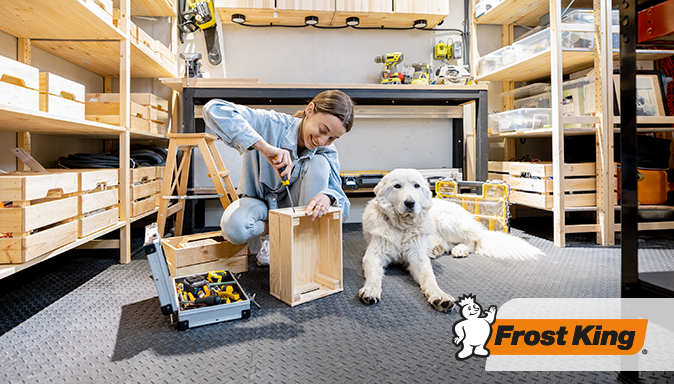By now, we all know the benefits of recycling household materials: it can help reduce landfill waste, conserve natural resources, protect wildlife by conserving habitats, and cut down on greenhouse gas emissions.
All these benefits do require a little extra effort—but by setting up a convenient, easy-to-use recycling system in your garage, you can make living greener a simple part of your everyday routine. Here’s what you need to do:
1. Get Educated. Check with your waste hauler or local recycling collection center to see what can—and can’t—be recycled in your community. The list of recyclable materials can change regularly, so make sure you’re clear on what they’ll take.
You also should ask if you need to sort your recyclables. Many curbside recycling programs are single stream, which means you separate all recyclable materials— newspaper, cardboard, plastic, aluminum, junk mail—from your household trash and toss them all together in one bin; it’s then carted off and sorted at a recycling center. Other services require you to separate paper, glass, plastics and metals. You’ll want to organize your home recycling center based on whether you have a single stream program or if you have to sort your trash.
And remember, not all materials are created equal. There are seven types of plastics, and some are recycled and others aren’t; to find out what type of plastic a container is made from, look for a small number inside a three-arrow triangle on the bottom of containers. You’ll need to know what number plastic your hauler or recycling center accepts: #1 and #2 plastic are the most commonly recycled plastics.
You should also ask how to handle items like old batteries, printer cartridges or electronics—many haulers can’t recycle these items, but stores like Best Buy and Staples will take them. Plastic grocery bags are also not accepted by most recycling handlers, but many grocery stores have a collection bin where you can drop off plastic bags and sheeting. Check with your local grocery store to see if they accept plastic bags.
2. Get Organized. The easiest, most functional way to handle recycling is a two-part system with a small storage area to collect daily recyclables inside and a larger storage area outside in the garage. The daily storage area can just be a small bin near the trash can where you can separate out recyclable materials from your daily trash. Clear an area in the garage for the larger recycling area. If your service is single stream, all you need is a large bin with a recycling symbol on it so your trash haulers know it’s not garbage. Just empty the inside bin into the larger bin whenever it gets full and you’re good to go.
If you need to sort items, you’ll need a slightly more elaborate system with a number of different bins set up in the garage. Choose containers that are easy to transport (look for wheels or sturdy handles depending on whether you need to drag the bins to the end of your driveway or load them up in your car to take to a center) and large enough to hold a week’s worth of materials. You can buy coordinating bins that are specially made for recycling or repurpose bins you already have. Clearly label what each bin is for. It helps to post recycling guidelines nearby so you don’t have to try to remember if #1 plastic is accepted but #7 plastic isn’t. Large cardboard boxes should be broken down and neatly stacked.
And remember: while your recyclables don’t have to be squeaky clean, you do need to empty and quickly rinse cans, bottles and containers before you set them out.
3. Go Greener. You’re already living greener by creating a recycling station in your garage. Why not be even kinder to the Earth (and your wallet!) by making your garage more energy efficient? Frost King makes a variety of garage door weatherstripping and bottom seal products that can stop air conditioned (or heated) air from your home seeping outside and wasting energy. A properly sealed garage door can also keep out water and insects, making your garage a more secure space. Watch this video for tips on how to choose a bottom seal and side seal on wooden, aluminum or steel garage doors:
